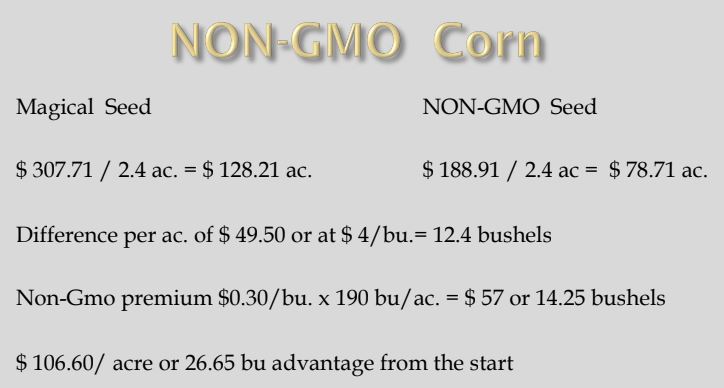Cameron Mills, a grower from Walton, Indiana, spoke a couple months ago at the annual Oregon Seed League conference. Among his surprising messages:
- Moving away from GMO seed is a sound economic move
- Glyphosate is under threat from consumers and we’ll have to adapt – but it certainly won’t put an end to use of cover crops
- Big Ag is moving in the direction that consumers demand – “regenerative” ag
- Introducing beef into the Midwest mix is very profitable
These days, Mills said, consumers are driving change in ag. “They want to know where products are produced, how healthy they are, and how safe,” he said. And consumers around the world are speaking ever louder that they’ve had enough of GMO.
Mills said that after 23 years of pushing GMO, the tide is moving against it. So instead of fighting the tide, Mills has grabbed onto Non-GMO full time, in a hurry. And, he made a convincing argument that Non GMO is a darn sight less costly than going with the “Magical Seeds.” See below.

He said that with the per/acre savings, there’s a better Return on Investment with Non-GMO. So what difference does it make if the GMO seed outproduces the Non-GMO seed by a few bushels/acre? By the way, he said “magical seed” doesn’t always perform to it’s promise anyway. His farm of almost 4000 acres – corn, soybeans, triticale, wheat and beef cattle – is 100 percent Non-GMO and he’s been in continuous cover crop since 2006.
In terms of cover crop choices, Mills says he likes annual ryegrass a lot, and it has helped him reduce damage on his fields in spring when he wants to get out and start planting, even when it’s still a bit wet.
In the next blog, we’ll talk about other topics he discussed, including how to apply cover crops, how to manage and how to learn to adapt quickly with Plan B, C, and D. Farming on the fly? Not exactly, but flexibility is important…and experience helps grow confidence in being flexible.



